Medical writing is a process of creating documents that explain medical or scientific information in accurate and understandable language. It helps readers interpret data and make informed health or research decisions. The purpose is to make information accurate, useful, and clear.
Many students struggle with medical writing because it requires strict accuracy and knowledge of medical terminology. That's why professional medical writing examples matter: they can show in what kind of language this type of document must be written and how you can present evidence without losing flow.
If you struggle with your papers and need help structuring your work so it meets the academic standards, you can rely on an expert essay helper from EssayHub to give you a hand with your deadlines.
What Is Medical Writing?
Medical writing is the preparation of documents that explain medical information in a clear and accurate way. It communicates research results and shares health education findings with different audiences. The writing process is different from other medical pieces, such as a medical essay, for example, because it has a broader focus on professional materials that are used in healthcare research and communication.
The skill set required for creating this document is demanding. You must understand complicated medical terminology and concepts, but also know how to convey them into plain English so it's easy to understand. You analyze data to find meaning and then build a document that explains that information. Good medical writing avoids excess words and keeps every claim tied to proof. Attention to accuracy comes first, but without structure, it will eventually fall apart.
What Types of Medical Writing Do Healthcare Professionals Use
Medical documentation covers every form of written content that supports healthcare and the pharmaceutical field. Each type serves a different purpose and reaches a different audience. The main types of medical writing include:
- Research and clinical trial reports
- Regulatory documents
- Patient education materials
- Promotional pieces
- Medical journalism
- Specialized formats for training or publication
Now, let's look at each type of writing in more detail.
Clinical Research and Trial Reports
Clinical papers, especially some of the more complicated medical research topics, rely on a structured presentation of findings. This type of medical writing may involve study protocols, case reports, abstracts, or summaries of trial outcomes. A well-written report presents data and explains what the numbers reveal, along with why those results matter to healthcare progress. Each document follows the IMRAD structure:
- Introduction
- Methods
- Results
- Discussion
Regulatory Documents
Regulatory writing prepares official documents for clinical trial applications, safety reporting, post-market updates, and product labeling. Medical writers handle applications for trials, safety reports, post-market updates, and product labeling. The language must be exact, making sure the reasoning is transparent. Every word of the document must follow the requirements set by agencies such as the FDA or the EMA. The best examples of regulatory medical writing show how precise language helps the relevant authorities evaluate product quality.
Patient Education and Health Communication Materials
This category focuses on helping people understand their health. Medical writers create brochures, guides, fact sheets, or even video scripts that express complex materials in simple language. Empathy is just as important as accuracy in this type of writing. The language must be direct and easy to read, but the tone must also be calm so the message stays supportive. These materials make medical knowledge accessible and help patients feel informed rather than overwhelmed.
Promotional Materials
Promotional medical writing supports scientific marketing and public awareness efforts. It can take the form of press releases, campaign content, or educational white papers designed for outreach. The work must persuade without bending facts. A medical writer in this field must walk carefully, so they can be sure a company’s goals align with scientific truth. Every claim in promotional materials must rest on reliable evidence.
Medical Journalism or News Articles
Medical journalism translates research into stories that the general public can easily understand. Medical writers interview experts, read studies, and turn dense findings into information that people can digest. Every sentence must stand on verified sources because the goal is clarity. Well-crafted medical journalism connects scientific discoveries with daily life, so the public can see how science moves from the lab into the real world.
Other Examples
Medical writing includes materials created for ongoing learning and professional communication. These forms extend beyond reports and regulations, shaping how information moves through the medical community. Examples include:
- Continuing medical education resources that support skill development and professional growth.
- Academic manuscripts that document and share new findings.
- Health blogs that translate expert insights into everyday language.
- Drug reference guides that provide accurate and updated information for clinical use.
Together, each of these forms shows that medical writing functions as a continuous network of shared understanding within healthcare.
Medical Writing Samples to Understand Industry Guidelines
The best way to grasp how medical writing works is to study real examples. Each site below shows a genuine sample of medical writing worth exploring for anyone who wants to understand how to communicate medical information.
NHS
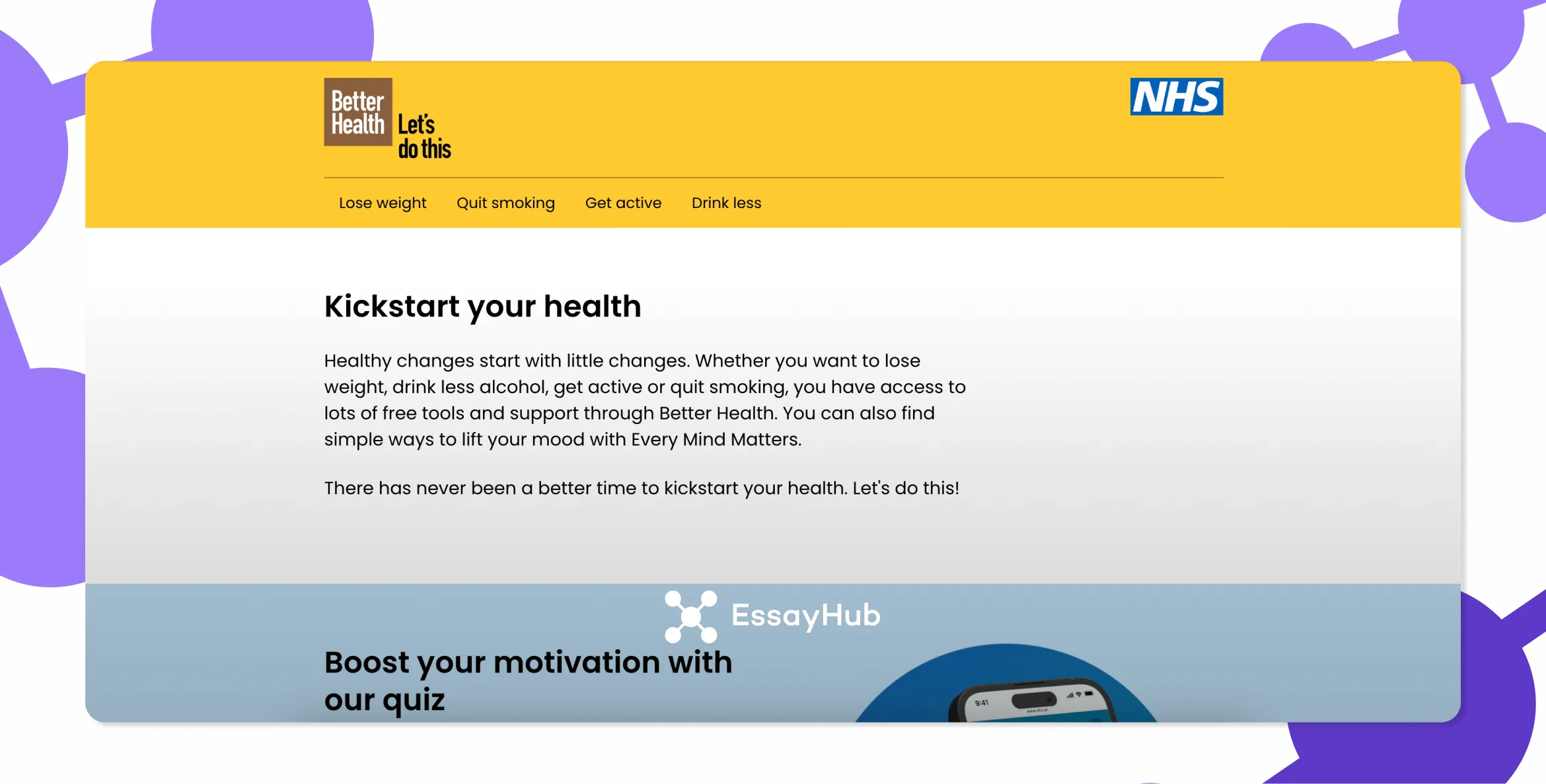
NHS Better Health focuses on helping people live healthier lives. The writing is practical, friendly, and grounded in science. Articles explain topics like diet, activity, and stress management in a way that feels encouraging rather than demanding. Every sentence has a purpose: to inform and motivate. This site is valuable for anyone studying how public health campaigns use simple language to inspire small but lasting behavior changes.
Patient
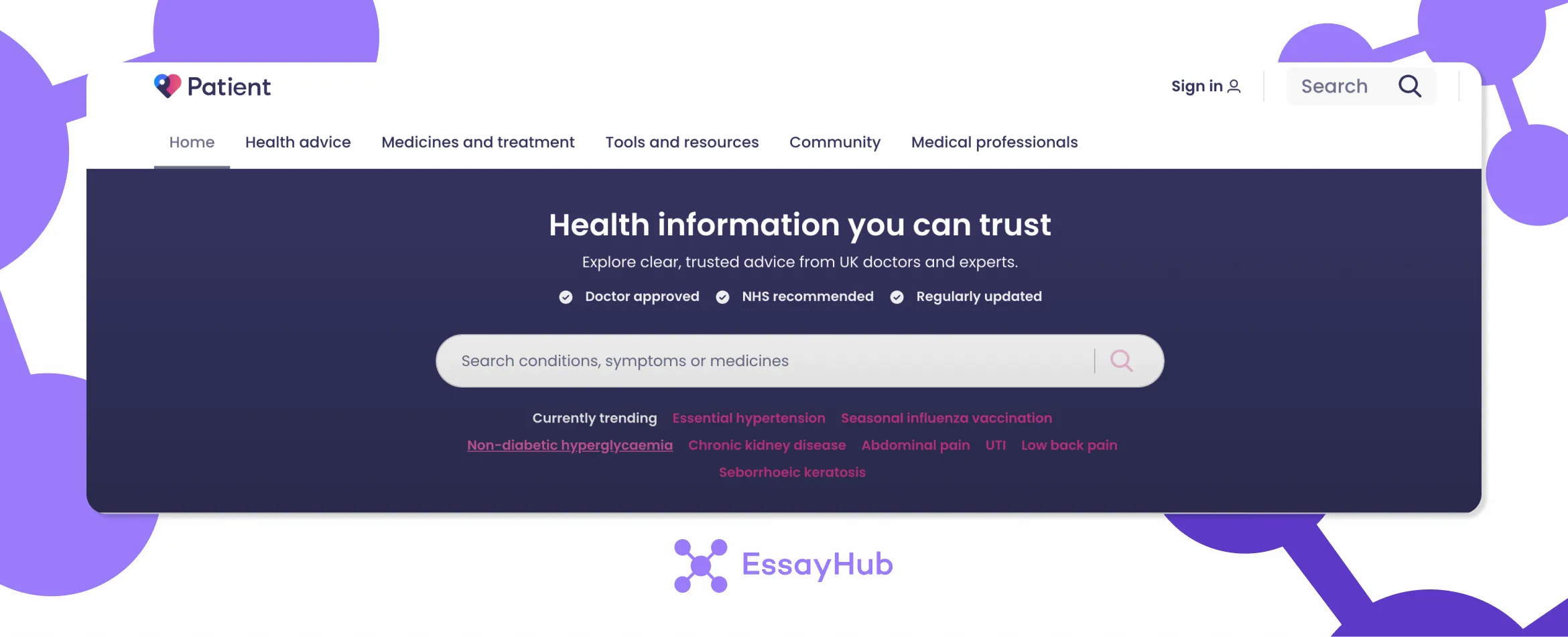
Patient.info turns medical knowledge into plain advice. It covers conditions, treatments, and prevention with accuracy and care. Doctors write and review the content, so it keeps authority without sounding distant. The tone is steady and calm, built to reassure. Readers who want clear examples of writing in medical field can see how the content on this site maintains structure and approachability while staying loyal to scientific truth.
NICE
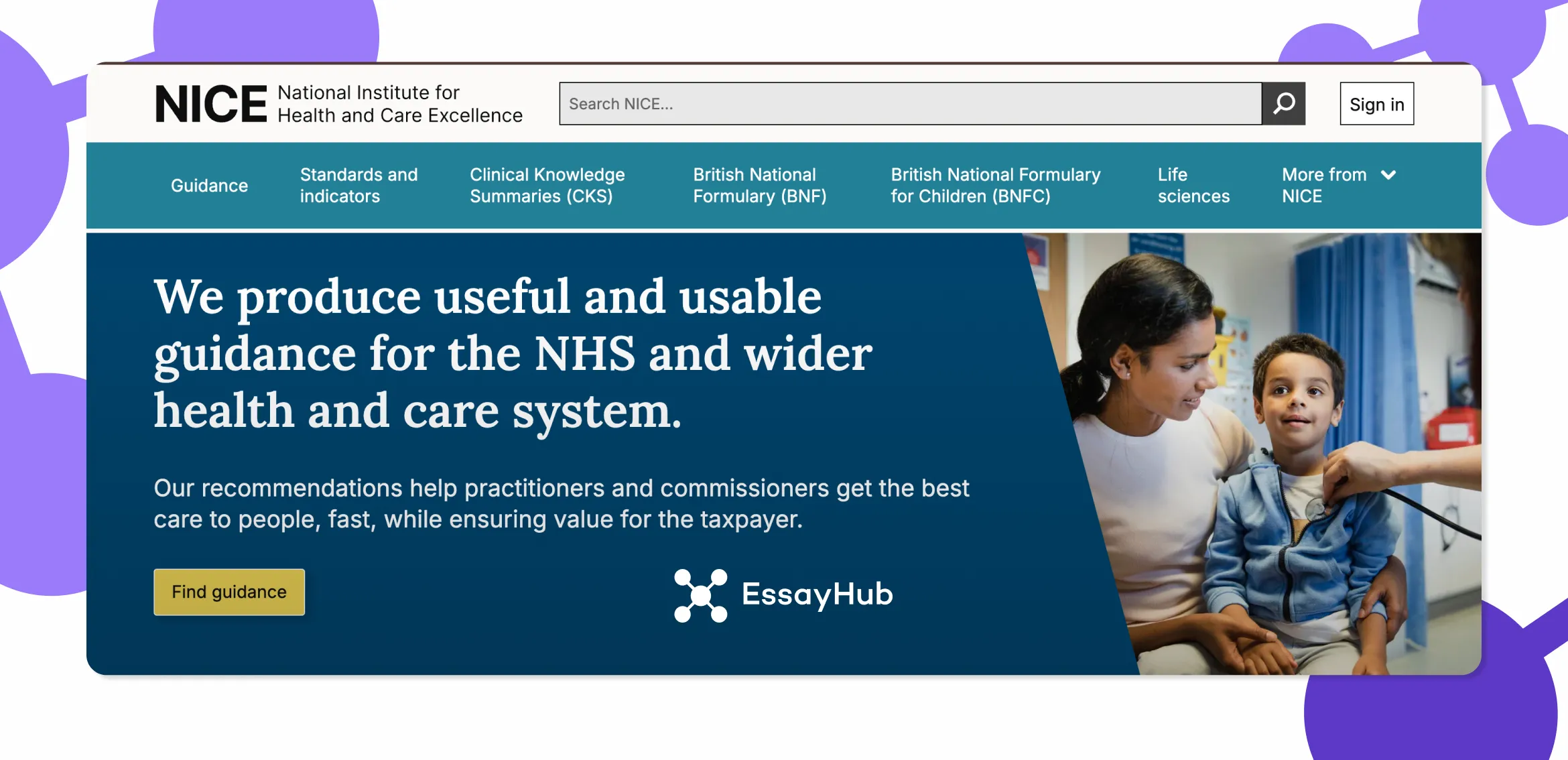
The National Institute for Health and Care Excellence (NICE) sets the standard for evidence-based writing. Each piece of content on this website follows a logical structure backed by research. All information is verified and written in precise, evidence-based language. The tone stays objective, and the conclusions are also exact. Anyone learning about regulatory or academic medical writing will see how facts become clear guidance that drives real decisions in healthcare.
NHS Blood and Transplant

NHS Blood and Transplant blends information with purpose. The writing is simple, human, and emotionally aware. It explains the science of donation while keeping the message kind and personal. This site shows how medical writing can earn trust through transparency and warmth. It’s ideal for studying how clear structure and empathy work together to support public health goals.
The New England Journal of Medicine
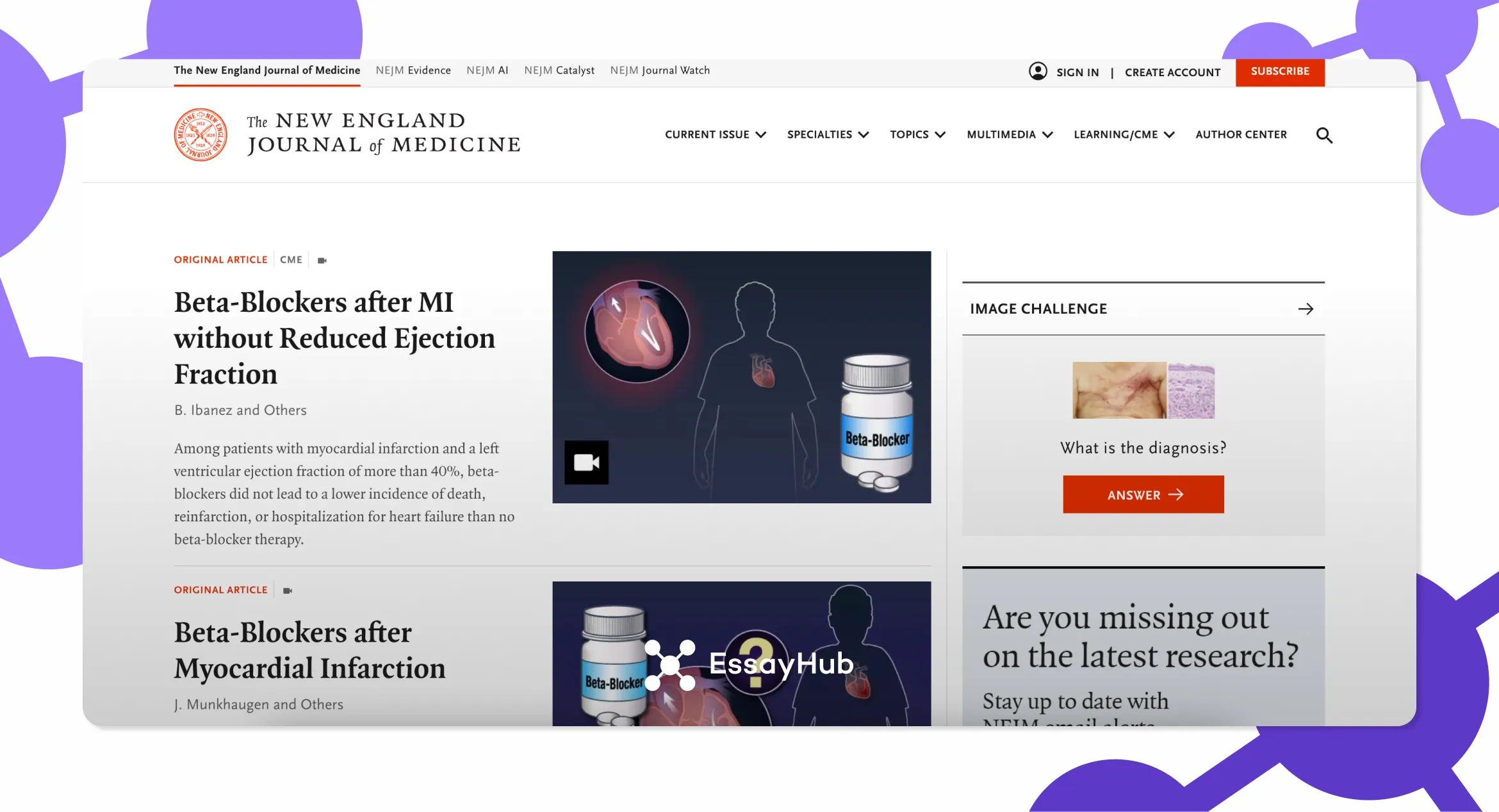
NEJM stands at the center of professional research communication. Articles follow the IMRAD structure and rely on evidence, not persuasion. The language is direct and disciplined, and every claim is backed by data. Readers can learn how complex research becomes readable through careful structure and the right words. NEJM is the model for medical writers who aim for precision and ethical clarity in every line.
Mayo Clinic

Mayo Clinic’s writing speaks directly to patients. It breaks down complicated medical terms without losing scientific accuracy. Each page explains patient stories, causes, treatments, and prevention in clear language that anyone can follow. The tone is calm and respectful. It doesn’t oversimplify or preach, but rather, it aims to teach. For medical writers, Mayo Clinic shows how to build understanding by using both accuracy and genuine empathy.
Medscape

Medscape writes for healthcare professionals who need accurate information quickly. It combines research summaries, expert analysis, and continuing education content. Medical writers can learn how to condense complex findings into readable insights without losing precision. Medscape is a useful guide for those who value speed and a clear, professional tone in digital healthcare communication.
Medical News Today
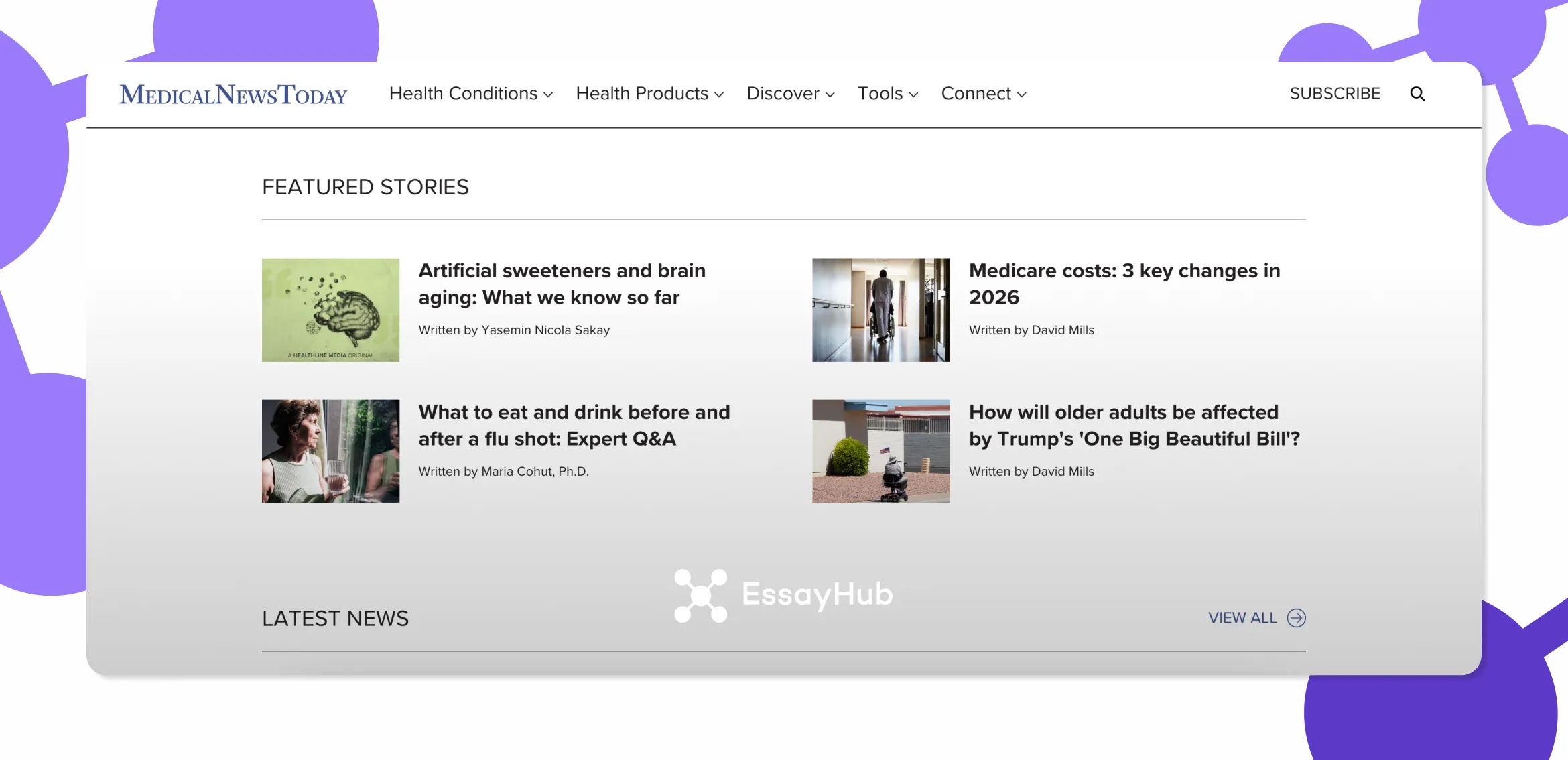
Medical News Today bridges science and journalism. It reports on new studies, reviews new research, and explains what those findings mean for everyday life. Each article is fact-checked by medical professionals before publication. For anyone studying medical journalism, this site shows how curiosity and clarity can work side by side to make complex topics understandable.
How to Use Medical Writing Examples
Medical writing examples help students and professionals learn to communicate complex information with accuracy and clarity. They reveal how real experts handle data, organize it, and choose tone for different audiences. When studied carefully, they show not just what to write, but how to think about structure and intent.
- Writing medical documents that follow the right format and clear standards.
- Learning better writing habits by seeing how skilled writers explain ideas.
- Building a small set of samples that show your abilities.
- Keeping information correct and easy to trust in every part of your work.
- Creating health materials or online content for different audiences.
- Getting new ideas by reading real examples from the field.
- Seeing how professionals break down research and make it understandable.
- Noticing how tone and structure change depending on who will read the text.
Check out our article with real medical school essay examples if you’ve already seen the guide we referenced above about its writing process.
Wrap-Up: Health Writing Made Simpler
Good medical writing conveys complicated information with structure, so it’s trustworthy and easy to understand. Now that you’ve seen what it takes to create strong documents in this field, you can use the samples above to explain complex ideas by keeping the information precise but still staying empathetic. Before we end, let’s recap the article once more:
- Medical writing explains medical and scientific information in clear, accurate language that readers can understand.
- The field includes many document types such as research reports, regulatory files, patient materials, promotional content, journalism, and education resources.
- Good medical writing relies on structure, precision, and a tone that matches the needs of the audience.
- Each writing type serves a different purpose in healthcare communication.
- Learning how these forms work helps you write stronger documents, present evidence clearly, and meet academic or professional expectations.
When the task feels too demanding, EssayHub can step in. A medical school essay writer from our platform can help you build and refine your papers with a strong focus on academic quality.
FAQ
How Can Medical Writing Examples Be Applied in Practice?
Medical writing examples help students and professionals learn structure, tone, and accuracy in clinical communication. Reviewing them improves critical thinking and writing precision. Students who need extra guidance can turn to a trusted nursing essay writing service for support and feedback.
Why Are Medical Writing Examples Important?
They give real insight into how clarity, structure, and credibility are built. Reading them helps medical writers learn what precision feels like on the page and how complex information becomes usable knowledge.
Where Can I Find Medical Writing Samples Online?
Quality examples can be found on websites run by health organizations, universities, and major research institutions. Platforms such as NHS, NICE, Mayo Clinic, NEJM, Medscape, and Medical News Today publish clear, credible materials that illustrate what effective writing looks like.
What Are the Different Medical Writing Types?
Medical writing involves several kinds of work. It includes research papers, clinical trial data, patient information materials, regulatory documentation, promotional writing, and professional education content. Each serves a distinct reader and a specific goal.
What Are Good Examples of Writing Samples?
The best medical writing samples show clear logic, factual grounding, and a steady rhythm of thought. They explain technical details without confusion and stay consistent from start to finish. The strongest ones come from trusted sources where accuracy matters.
What Are Medical Writing Examples?
Medical writing examples are real or sample documents that show how medical and scientific information should be presented. They include case studies, clinical data, educational articles, and official communication used in healthcare or research.
- Gray, J. A. (2019). Paragraphs in medical writing. AME Medical Journal, 4, 28–28. https://amj.amegroups.org/article/view/4983/html
- Division, D. (2025, March 24). How To Become a Medical Writer. UCSDExtension; UC San Diego Division of Extended Studies. https://extendedstudies.ucsd.edu/news-events/extended-studies-blog/how-to-become-a-medical-writer
- Mayo Clinic. (2025). Mayo Clinic. https://www.mayoclinic.org/; Mayo Foundation for Medical Education and Research. https://www.mayoclinic.org/




